Paul Müller
The Operating System of the Neuromorphic BrainScaleS-1 System
Mar 30, 2020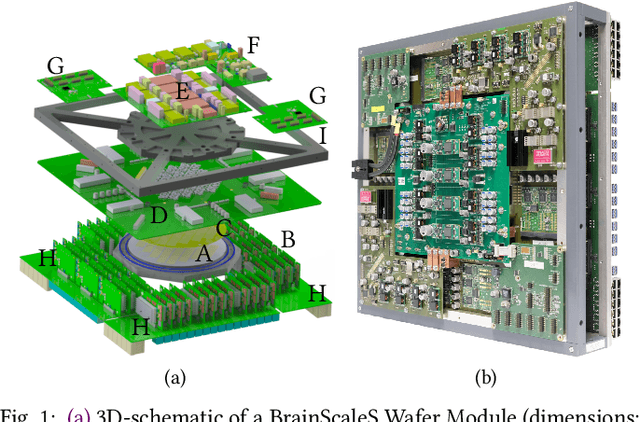
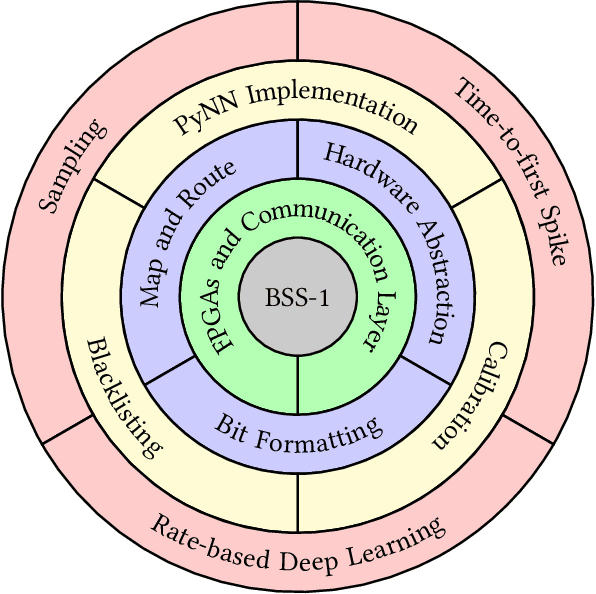
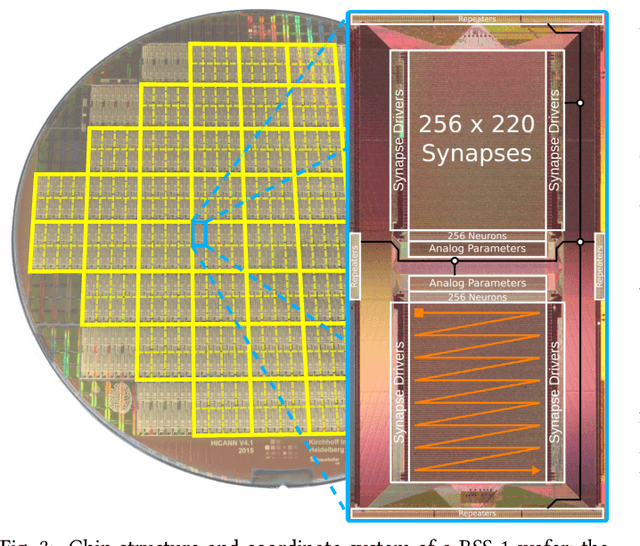
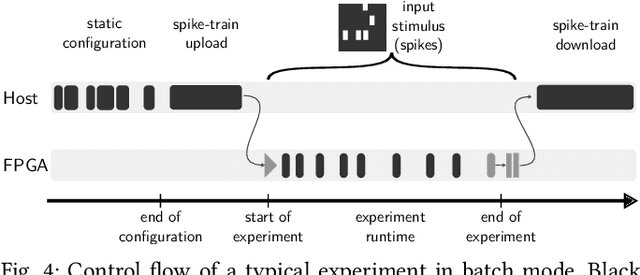
Abstract:BrainScaleS-1 is a wafer-scale mixed-signal accelerated neuromorphic system targeted for research in the fields of computational neuroscience and beyond-von-Neumann computing. The BrainScaleS Operating System (BrainScaleS OS) is a software stack giving users the possibility to emulate networks described in the high-level network description language PyNN with minimal knowledge of the system. At the same time, expert usage is facilitated by allowing to hook into the system at any depth of the stack. We present operation and development methodologies implemented for the BrainScaleS-1 neuromorphic architecture and walk through the individual components of BrainScaleS OS constituting the software stack for BrainScaleS-1 platform operation.
Generative models on accelerated neuromorphic hardware
Jul 11, 2018
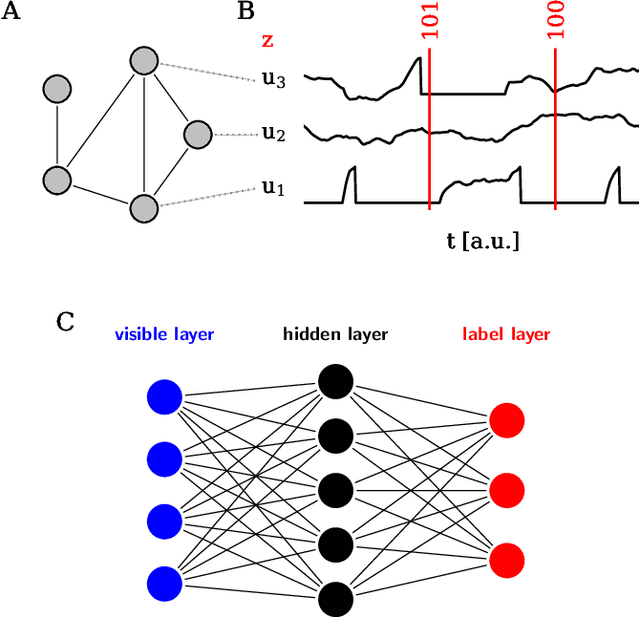
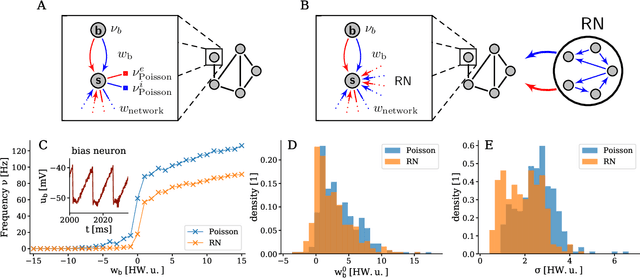
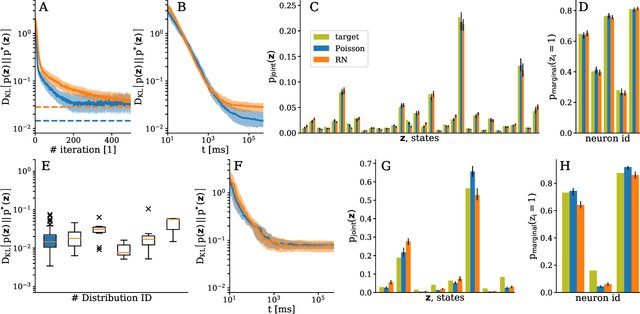
Abstract:The traditional von Neumann computer architecture faces serious obstacles, both in terms of miniaturization and in terms of heat production, with increasing performance. Artificial neural (neuromorphic) substrates represent an alternative approach to tackle this challenge. A special subset of these systems follow the principle of "physical modeling" as they directly use the physical properties of the underlying substrate to realize computation with analog components. While these systems are potentially faster and/or more energy efficient than conventional computers, they require robust models that can cope with their inherent limitations in terms of controllability and range of parameters. A natural source of inspiration for robust models is neuroscience as the brain faces similar challenges. It has been recently suggested that sampling with the spiking dynamics of neurons is potentially suitable both as a generative and a discriminative model for artificial neural substrates. In this work we present the implementation of sampling with leaky integrate-and-fire neurons on the BrainScaleS physical model system. We prove the sampling property of the network and demonstrate its applicability to high-dimensional datasets. The required stochasticity is provided by a spiking random network on the same substrate. This allows the system to run in a self-contained fashion without external stochastic input from the host environment. The implementation provides a basis as a building block in large-scale biologically relevant emulations, as a fast approximate sampler or as a framework to realize on-chip learning on (future generations of) accelerated spiking neuromorphic hardware. Our work contributes to the development of robust computation on physical model systems.
Pattern representation and recognition with accelerated analog neuromorphic systems
Jul 03, 2017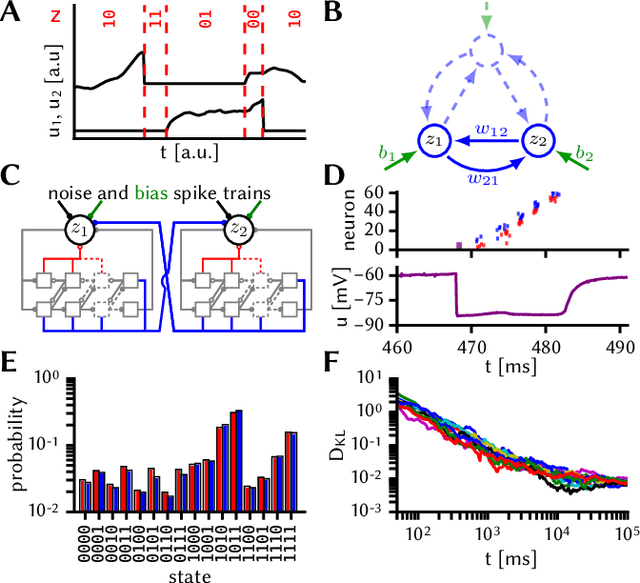

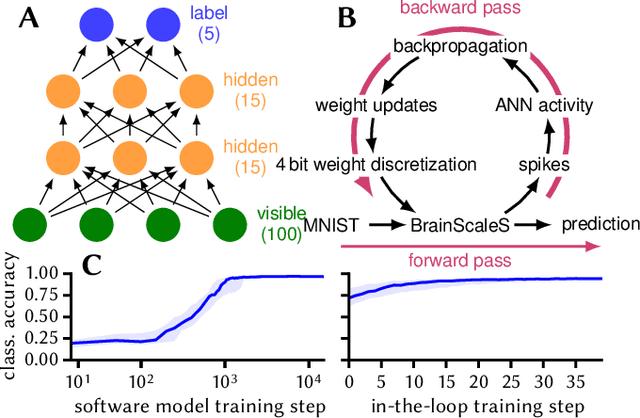
Abstract:Despite being originally inspired by the central nervous system, artificial neural networks have diverged from their biological archetypes as they have been remodeled to fit particular tasks. In this paper, we review several possibilites to reverse map these architectures to biologically more realistic spiking networks with the aim of emulating them on fast, low-power neuromorphic hardware. Since many of these devices employ analog components, which cannot be perfectly controlled, finding ways to compensate for the resulting effects represents a key challenge. Here, we discuss three different strategies to address this problem: the addition of auxiliary network components for stabilizing activity, the utilization of inherently robust architectures and a training method for hardware-emulated networks that functions without perfect knowledge of the system's dynamics and parameters. For all three scenarios, we corroborate our theoretical considerations with experimental results on accelerated analog neuromorphic platforms.
* accepted at ISCAS 2017
An Accelerated Analog Neuromorphic Hardware System Emulating NMDA- and Calcium-Based Non-Linear Dendrites
Mar 21, 2017

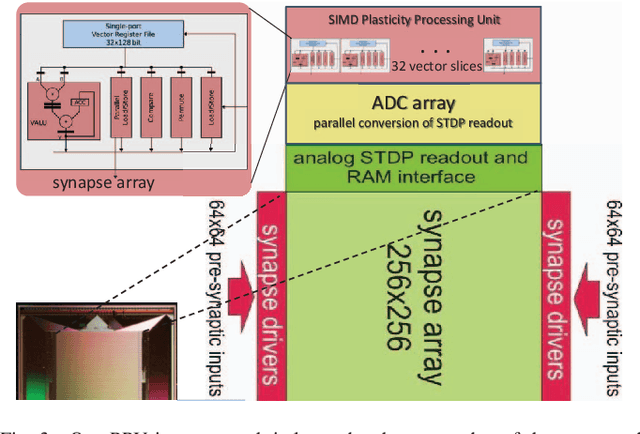

Abstract:This paper presents an extension of the BrainScaleS accelerated analog neuromorphic hardware model. The scalable neuromorphic architecture is extended by the support for multi-compartment models and non-linear dendrites. These features are part of a \SI{65}{\nano\meter} prototype ASIC. It allows to emulate different spike types observed in cortical pyramidal neurons: NMDA plateau potentials, calcium and sodium spikes. By replicating some of the structures of these cells, they can be configured to perform coincidence detection within a single neuron. Built-in plasticity mechanisms can modify not only the synaptic weights, but also the dendritic synaptic composition to efficiently train large multi-compartment neurons. Transistor-level simulations demonstrate the functionality of the analog implementation and illustrate analogies to biological measurements.
Characterization and Compensation of Network-Level Anomalies in Mixed-Signal Neuromorphic Modeling Platforms
Feb 10, 2015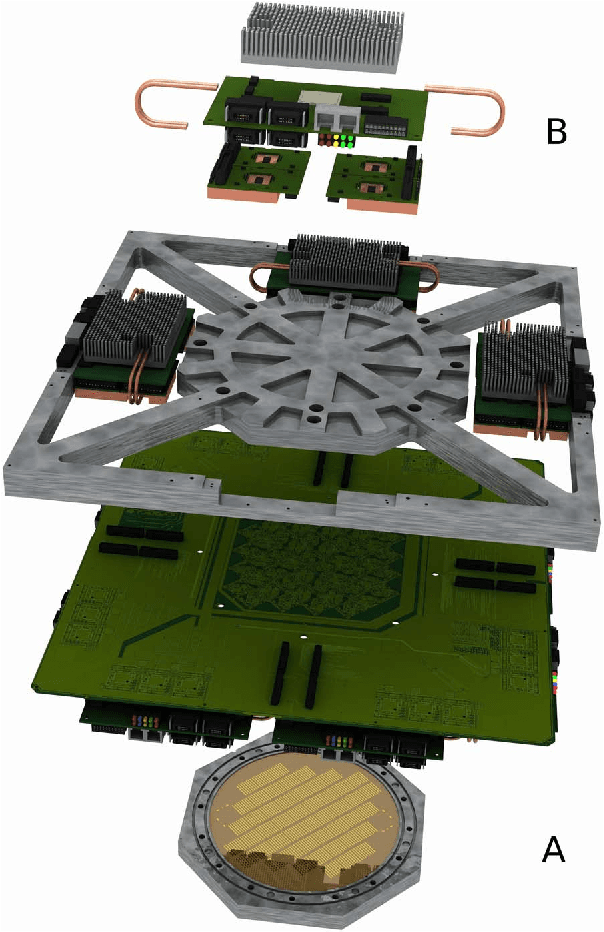
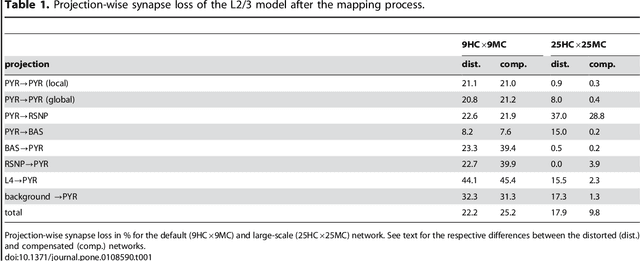
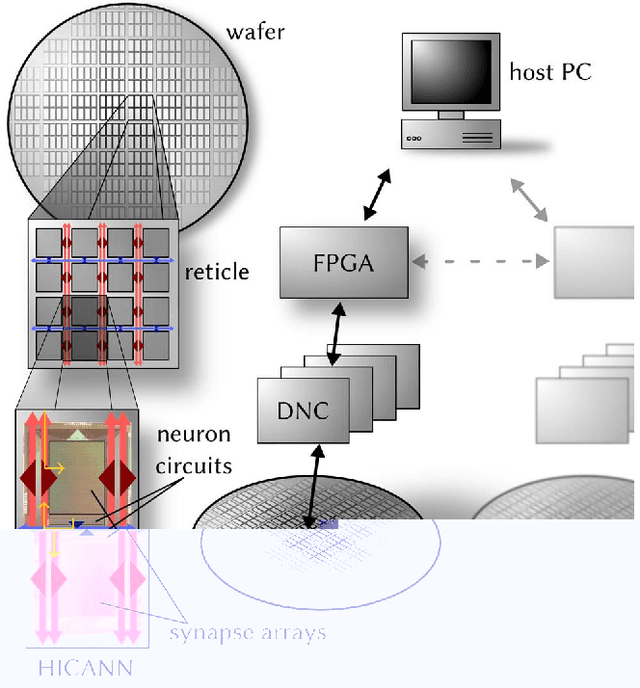
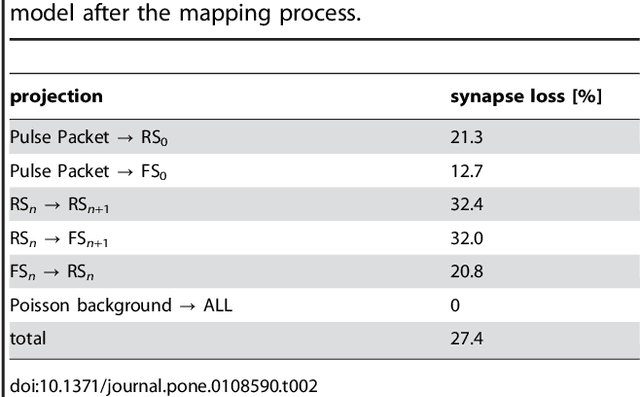
Abstract:Advancing the size and complexity of neural network models leads to an ever increasing demand for computational resources for their simulation. Neuromorphic devices offer a number of advantages over conventional computing architectures, such as high emulation speed or low power consumption, but this usually comes at the price of reduced configurability and precision. In this article, we investigate the consequences of several such factors that are common to neuromorphic devices, more specifically limited hardware resources, limited parameter configurability and parameter variations. Our final aim is to provide an array of methods for coping with such inevitable distortion mechanisms. As a platform for testing our proposed strategies, we use an executable system specification (ESS) of the BrainScaleS neuromorphic system, which has been designed as a universal emulation back-end for neuroscientific modeling. We address the most essential limitations of this device in detail and study their effects on three prototypical benchmark network models within a well-defined, systematic workflow. For each network model, we start by defining quantifiable functionality measures by which we then assess the effects of typical hardware-specific distortion mechanisms, both in idealized software simulations and on the ESS. For those effects that cause unacceptable deviations from the original network dynamics, we suggest generic compensation mechanisms and demonstrate their effectiveness. Both the suggested workflow and the investigated compensation mechanisms are largely back-end independent and do not require additional hardware configurability beyond the one required to emulate the benchmark networks in the first place. We hereby provide a generic methodological environment for configurable neuromorphic devices that are targeted at emulating large-scale, functional neural networks.
 Add to Chrome
Add to Chrome Add to Firefox
Add to Firefox Add to Edge
Add to Edge